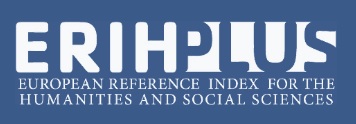S. V. Doroshenko, R. I. Vasilyeva. Spatial Estimation of Regional Economic Growth Heterogeneity During 2014‒2021
doi: 10.15507/2413-1407.128.032.202403.484-503
UDК 330.352.2
Аbstract
Introduction. The aggravation of socio-economic heterogeneity among Russian regions is one of the main challenges for sustainable development of the country. The main task of spatial policy is to ensure advanced rates of development of geostrategic and lagging behind territories as well as increasing competitiveness of regional economies. However, the events of the past decade substantially adjusted plans on regional economic growth enhancement. The aim of the study is to estimate spatial economic growth heterogeneity and interdependence of bordering entities of Russia over 2013‒2021.
Materials and Methods. The main research method is Moran’s methodology for assessing local and global indices characterizing the inter-regional relation and A. Anselin’s approach for local indices of spatial autocorrelation and spatial clusters identification. The research uses regional data on real GRP per capita growth rates for 85 Russian regions for five annual intervals.
Results. The results confirmed that geopolitical tensions significantly enhance the regional economic growth heterogeneity. The most developed regions, including main hydrocarbon producers, are found being most exposed to external economic shocks, which reduced their spatial interrelation. Southern and eastern regions demonstrated an upward growth trend. The COVID-19 pandemic shaped the appearance of western and eastern clusters. Regional economies demonstrated the decreasing heterogeneity through enhancing the economic growth rates in the post-crises period. Coincidently, we document that economic development of the regions influences the growth in bordering entities.
Discussion and Conclusion. The research allows defining three stages of regional economic growth rates heterogeneity during 2013‒2021. The derived conclusions are recommended for actualizing state policy in reducing regional heterogeneity and strengthening the national economic space.
Keywords: spatial heterogeneity, economic growth, Moran’s index, Anselin matrix, Russian regions
Conflict of interest. The authors declare no conflict of interest.
For citation: Doroshenko S.V., Vasilyeva R.I. Spatial Estimation of Regional Economic Growth Heterogeneity During 2014‒2021. Russian Journal of Regional Studies. 2024;32(3):484–503. https://doi.org/10.15507/2413-1407.128.032.202403.484-503
REFERENCES
1. Glinskiy V.V., Serga L.K., Alekseev M.A. Model Representation of Adjustable Differentiation of Regional Socio-Economic Systems. Russian Journal of Regional Studies. 2023;31(3):477–497. (In Russ., abstract in Eng.) https://doi.org/10.15507/2413-1407.124.031.202303.477-497
2. Li Q., Zhao Y., Li S., Zhang L. Spatial-Temporal Characteristics of the Coupling Coordination of Social Security and Economic Development in China During 2002–2018. Regional Sustainability. 2021;2(2):116‒129. https://doi.org/10.1016/j.regsus.2021.04.001
3. Bai C.E., Ma H., Pan W. Spatial Spillover and Regional Economic Growth in China. China Economic Review. 2012;23(4):982‒990. https://doi.org/10.1016/j.chieco.2012.04.016
4. Chica-Olmo J., Sari-Hassoun S., Moya-Fernández P. Spatial Relationship between Economic Growth and Renewable Energy Consumption in 26 European Countries. Energy Economics. 2020;92:104962. https://doi.org/10.1016/j.eneco.2020.104962
5. Wang L., Wu C., Zhao X., Liu D., Zhang T. Spatio-Temporal Characteristics of Regional Sustainable Economic Growth Drivers of China. Regional Sustainability. 2021;2(3):239‒255. https://doi.org/10.1016/j.regsus.2021.11.004
6. Rey S.J. Spatial Empirics for Economic Growth and Convergence. Geographical Analysis. 2001;33(3):195‒214. https://doi.org/10.1111/j.1538-4632.2001.tb00444.x
7. Ying L.G. Measuring the Spillover Effects: Some Chinese Evidence. Papers in Regional Science. 2000;79(1):75‒89. https://doi.org/10.1111/j.1435-5597.2000.tb00760.x
8. Karim A., Suhartono, Prastyo D.D. Spatial Spillover Effect of Transportation Infrastructure on Regional Growth. Economy of Region. 2020;16(3):911‒920. https://doi.org/10.17059/ekon.reg.2020-3-18
9. Glazyrina I., Zabеlina I., Klevakina E. Economic Development and Environmental Impact Disparities among Russia’s Regions. Journal of the New Economic Association. 2010;(7):70‒88. (In Russ., abstract in Eng.) Available at: http://journal.econorus.org/pdf/NEA-7.pdf (accessed 17.01.2024).
10. Demidova O.A. Spatial-Autoregressive Model for the Two Groups of Related Regions (Eastern and Western Parts of Russia). Applied Econometrics. 2014;(2):19‒35. (In Russ., abstract in Eng.) Available at: https://ideas.repec.org/a/ris/apltrx/0235.html (accessed 17.01.2024).
11. Nevzorova E.N., Kireenko A.P., Mayburov I.A. Spatial Correlation and Distribution of the Shadow Economy in Russia. Economy of Region. 2020;16(2):464‒478. (In Russ., abstract in Eng.) http://doi.org/10.17059/2020-2-10
12. Rezepin A.V. Spatial Economic Systems: Methodological Tools and Applied Solutions. Bulletin of the South Ural State University. Series “Economics and Management”. 2021;15(4):47–56. (In Russ., abstract in Eng.) http://doi.org/10.14529/em210405
13. Petrov M.B., Serkov L.A., Kozhov K.B. Modelling the Heterogeneity of the Mutual Influence between Russian Regions in the Manufacturing Industry. Economy of Region. 2021;17(3):944‒955. (In Russ., abstract in Eng.) https://doi.org/10.17059/ekon.reg.2021-3-16
14. Artamonov N.V., Kurbatskii A.N., Khalimov T.M. Relationship between Economic Development and Population Age Structure in the Russian Regions. Terra Economicus. 2021;19(2):77–90. (In Russ., abstract in Eng.) https://doi.org/10.18522/2073-6606-2021-19-2-77-90
15. Rusanovskiy V.A., Markov V.A. Employment and Labor Productivity in Macroregions of Russia: Spatial Interdependence. Studies on Russian Economic Development. 2018;29(2):135‒143. https://doi.org/10.1134/S1075700718020120
16. Járdány K., Győri T. Spatial Research of the Labour Reserve in the Winery Center of the Danube Wine Region (2014–2019). Regional Economy. South of Russia. 2021;9(4):109‒120. https://doi.org/10.15688/re.volsu.2021.4.11
17. Krasnoselskaya D.Kh. Examining Regional Polycentricity: Does It Really Matter in Transitional Russia? Economy of Region. 2021;17(2):389‒401. https://doi.org/10.17059/ekon.reg.2021-2-3
18. Dubrovskaya J.V., Kozonogova E.V. The Impact of Digitalization on the Demand for Labor in the Context of Working Specialties: Spatial Analysis. St. Petersburg University Journal of Economic Studies. 2021;37(3):395–412. https://doi.org/10.21638/spbu05.2021.302
19. Okunev I.Yu., Gorelova J.S., Gruzdeva E.E. Regional Disparities of Electoral Behaviour in Poland: Comparative Spatial Analysis. Comparative Politics Russia. 2021;(1):149‒160. (In Russ., abstract in Eng.) https://doi.org/10.24411/2221-3279-2021-10011
20. Kuletskaya L.E. Spatial Modeling of Voter Choice: The Survey of Theoretical and Empirical Approach. Spatial Economics. 2021;17(2):127–164. (In Russ., abstract in Eng.) https://doi.org/10.14530/se.2021.2.127-164
21. Korneeva E.M. Local Voting in Russia: A Spatial-econometric Approach. Political Science. 2021;(3):229–250. (In Russ., abstract in Eng.) http://www.doi.org/10.31249/poln/2021.03.10
22. Podkolzina E.A., Demidova O.A., Kuletskaya L.E. Spatial Modeling оf Voting Preferences in Russian Federation. Spatial Economics. 2020;16(2):70–100. (In Russ., abstract in Eng.) https://doi.org/10.14530/se.2020.2.070-100
23. Fal’tsman V.K. On Measurement of Economic Growth. Studies on Russian Economic Development. 2018;29(1):6‒11. https://doi.org/10.1134/S1075700718010033
24. Ivanov Yu. Issues of Measuring Economic Growth in the CIS Countries. Voprosy statistiki. 2014;(10):3‒13. (In Russ., abstract in Eng.) Available at: https://voprstat.elpub.ru/jour/article/view/146 (accessed 17.01.2024).
25. Zubarevich N.V. Regions of Russia in the New Economic Conditions. Journal of New Economic Association. 2022;(3):226–234. (In Russ., abstract in Eng.) https://doi.org/10.31737/2221-2264-2022-55-3-15
26. Demidova O., Kamalova E. Spatial Econometric Modeling of Economic Growth in Russian Regions: Do Institutions Matter? Economic Policy. 2021;16(2):34‒59. (In Russ., abstract in Eng.) Available at: https://cyberleninka.ru/article/n/prostranstvenno-ekonometricheskoe-modelirovanie-ekonomicheskogo-rosta-rossiyskih-regionov-imeyut-li-znachenie-instituty (accessed 17.01.2024).
27. Averina L.M., Sirotin D.V. Assessment of Spatial Effects from Innovation Activities in the Industrialized Russian Regions. Economy of Region. 2020;16(1):268‒282. (In Russ., abstract in Eng.) https://doi.org/10.17059/2020-1-20
28. Naidenova Iu.N., Leonteva V.V. Economic Policy Uncertainty and Investment of Russian Companies. Voprosy ekonomiki. 2020;(2):141–159. (In Russ., abstract in Eng.) https://doi.org/10.32609/0042-8736-2020-2-141-159
29. Vasilyeva R.I. Impact of Geopolitical Risks on Inter-regional Economic Disparity in Russia. π-Economy. 2023;16(6):64–76. (In Russ., abstract in Eng.) https://doi.org/10.18721/JE.16605
30. Zubarevich N.V. Spatial Development Strategy: Priorities and Instruments. Voprosy ekonomiki. 2019;(1):135‒145. (In Russ., abstract in Eng.) https://doi.org/10.32609/0042-8736-2019-1-135-145
About the authors:
Svetlana V. Doroshenko, Dr.Sci. (Econ.), Professor of the Chair of Economics of the Ural Federal University named after the First President of Russia B. N. Yeltsin (29 Mira St., Yekaterinburg 620062, Russian Federation), ORCID: https://orcid.org/0000-0002-8282-6062, Researcher ID: L-6719-2017, Scopus ID: 56470612600, doroshenkos@mail.ru
Rogneda I. Vasilyeva, Senior Lecturer at the Chair of Economics of the Ural Federal University named after the First President of Russia B. N. Yeltsin (29 Mira St., Yekaterinburg 620062, Russian Federation), ORCID: https://orcid.org/0000-0001-5539-3145, Researcher ID: AAL-4309-2021, Scopus ID: 57417710500, vasilyeva.ri@uiec.ru
Contribution of the authors:
S. V. Doroshenko – theoretical framework analysis; literature review preparation; critical analysis and text revision; general supervision of the scientific research.
R. I. Vasilyeva – statistical database collection; statistic calculations in Stata software; preparation of visual materials of the research; justification of the research method; preparation of the initial draft of the article.
Availability of data and materials. The datasets used and/or analysed during the current study are available from the authors on reasonable request.
The authors have read and approved the final manuscript.
Submitted 26.03.2024; revised 27.04.2024; accepted 14.05.2024.

All the materials of the "REGIONOLOGY" journal are available under Creative Commons «Attribution» 4.0
















